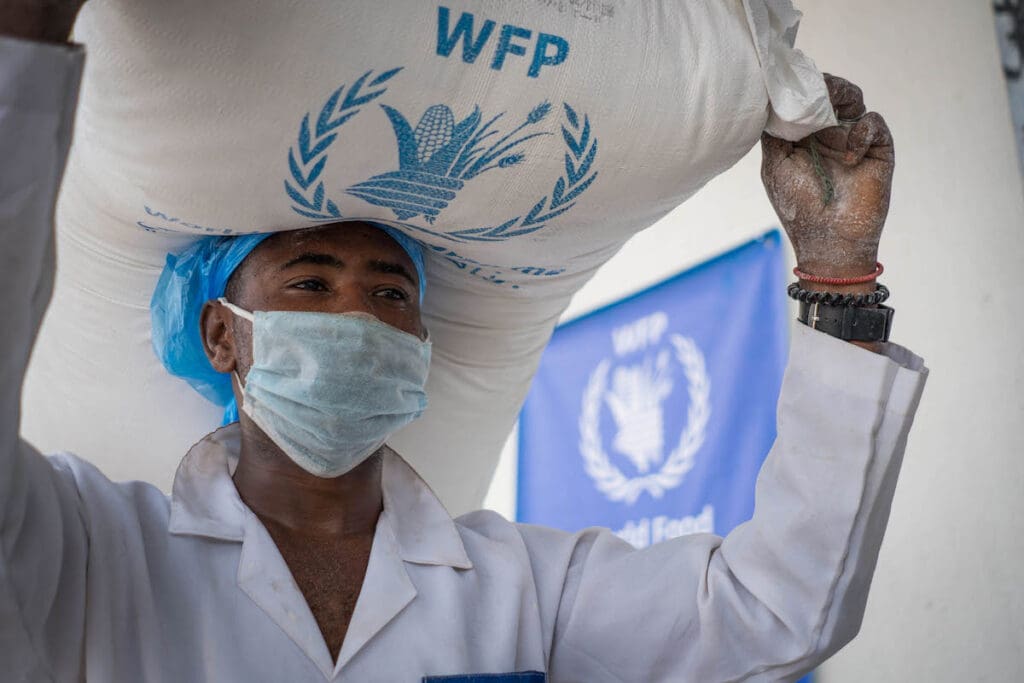Yemen Teeters on the Brink as Conflict and Economic Crises Grind On

SANA’A – Yemen is at a tipping point as conflict and economic woes drag the country to the brink of famine and risk cancelling out the gains made through humanitarian action in the past few years, the United Nations World Food Programme (WFP) warns today.
Conflict has escalated across more than 40 frontlines, the cost of basic foods is higher than ever before and the currency has lost 25 percent of its value in 2020 alone – 70 percent compared to its pre-war value. As the country’s foreign currency reserves tick towards zero, Yemen’s ability to import food could also disappear, threatening more hunger for millions.
“Yemen is a man-made crisis and there is a man-made solution. We need access, funding and eventually peace,” said U.N. World Food Programme Executive Director David Beasley. “In 2018, we pulled Yemen back from the brink. We can do that again, if we have the funds and the access.”
Conditions in Yemen have deteriorated beyond the point reached in 2018. Over 20 million people in Yemen are food insecure with 13 million requiring U.N. World Food Programme food assistance to meet their daily needs. Another three million people are at risk of worsening hunger as coronavirus sweeps unchecked across Yemen.
For the last six months, families in areas controlled by the Sana’a authorities have only received food assistance on alternate months as the U.N. World Food Programme has tried to stretch its limited resources and avoid full breaks in assistance. But this has made life harder for millions: In just three months people with inadequate food consumption in these areas increased from 28 to 43 percent, according to U.N. World Food Programme data.
Yemen is one of the most complex operating environments in the world and the challenges undermine the humanitarian response. Every day, U.N. World Food Programme food trucks are tied up in bureaucratic delays. Not one person has yet been registered biometrically for food assistance in areas under the Sana’a based authorities.
Meanwhile, a political tussle over fuel imports into Hodeidah has led to crippling fuel shortages. This has impacted delivery of food as well as humanitarian support for hospitals and water treatment plants. Sana’a airport has now been closed stranding aid workers inside and outside Yemen.
“This all has to stop if the humanitarian community is to save the Yemeni people from famine,” said Beasley. “We also need the international community to continue to fund humanitarian operations as generously as past years so we can help Yemen turn the corner.”
In 2020, the U.N. World Food Programme asked for $2.5 billion to build on the food security gains made in 2019. Around half has been made available for the the U.N. World Food Programme’s response this year, including a recent $138 million contribution from the Kingdom of Saudi Arabia. Urgent funding requirements for the next six months amount to more than $500 million – with $150 million needed through the end of the year alone. Further cuts to food assistance are expected in the last quarter if additional funding is not received.
At present, the top five donors to U.N. World Food Programme operations in Yemen in 2020 are: USA ($272 million), the Kingdom of Saudi Arabia ($138 million), Germany ($103 million), EU ($53 million), UK ($40 million).
For broadcast quality video and shotlist click here | For photos click here | Link to WFP Insight story here
# # #
The U.N. World Food Programme is the world’s largest humanitarian organization, saving lives in emergencies, building prosperity and supporting a sustainable future for people recovering from conflict, disasters and the impact of climate change.
Follow us on Twitter @WFPUSA, @wfp_media, @wfpyemen
Contact:
- Steve Taravella, WFP/Washington Tel. +1 202 653 1149, Mob. +1 202 770 5993
- Shada Mograby, WFP/New York, Mob +1 929 2899867




